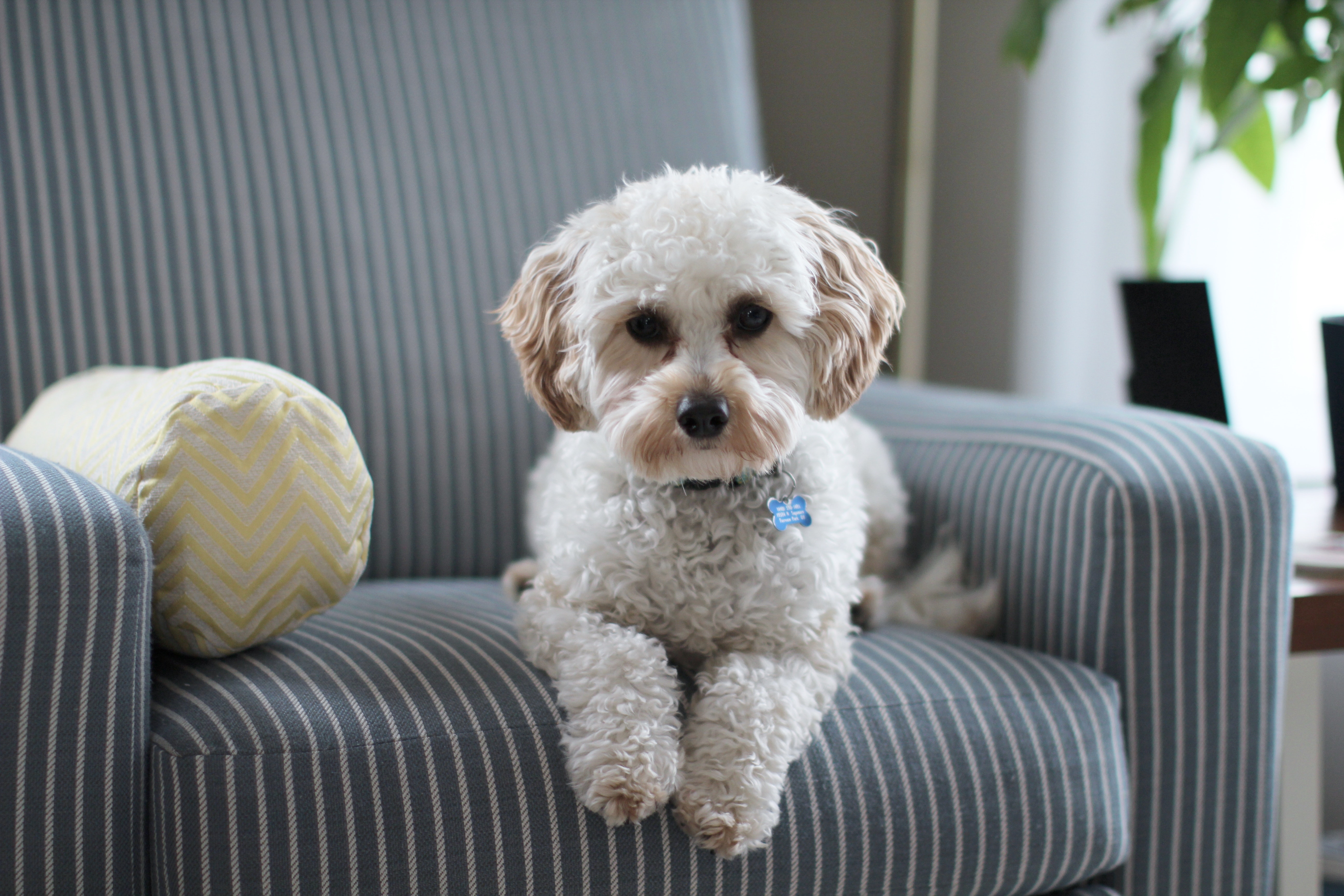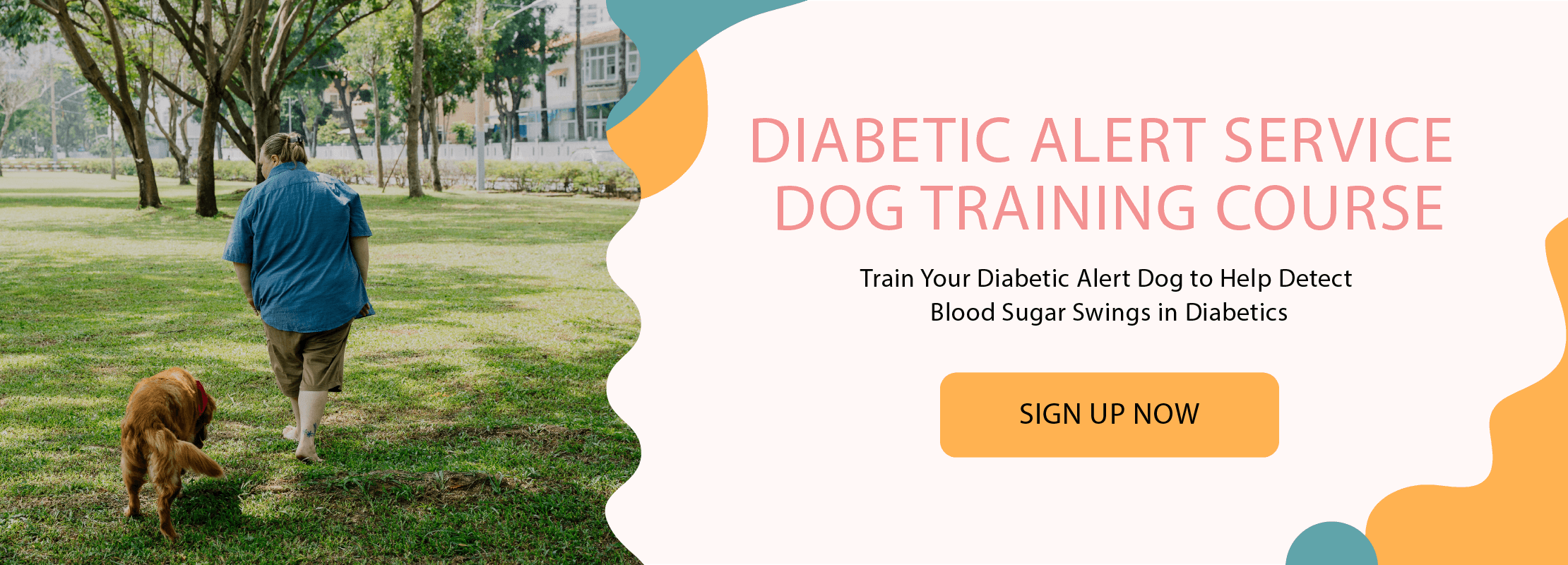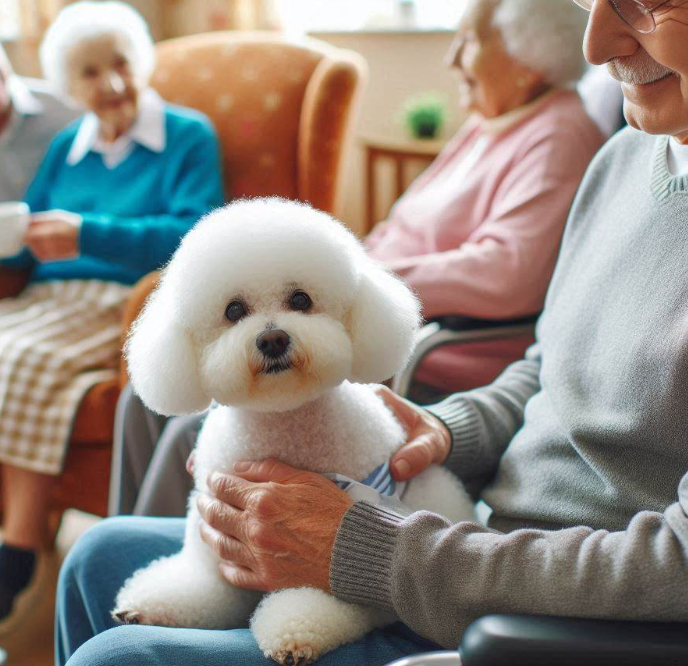
Diabetic Alert Service Dogs serve a very important role in the life of many people with type 1 diabetes. Diabetic Alert service dogs can be used by people with type 2 diabetes, but the statistics show that type 2 is easier to manage. According to the World Health Organization, 9.3% of the adult population in the world suffers from diabetes. There are roughly 463 million diabetics in the world at the time of writing this article and a significant portion of them are likely to benefit from a Diabetic Alert service dog. Some experts project that we may be faced with 700 million diabetics by 2045.
Who Can Benefit from a Diabetic Alert Service Dog?
People that may lack hypoglycemia awareness should consider obtaining a Diabetic Alert dog that will help with keeping them safe and assist in monitoring their glucose levels. If you are relying on insulin to control your diabetes that is a strong argument to have a diabetic alert dog with you. Individuals who have frequent hypoglycemia (low blood sugar) episodes combined with accompanying health problems might want to consider the advantages of having a diabetic alert service dog. According to the “Diabetic Alert Dogs: A Preliminary Survey of Current Users” paper published by the American Diabetes Association, many diabetics who use a service dog agree on the following:
1) A diabetic alert dog gives them peace of mind that their dog will alert them to an upcoming hypoglycemia episode on time.
2) The diabetic alert dog contributes to their comfortable and happier life.
3) The service dog enables them to participate in more physical activities.
What Makes a Good Diabetic Alert Service Dog?
Most service dog trainers prefer breeds that are famous for their keen sense of smell as they are likely to be more accurate in detecting low blood sugar levels than other dogs. However, there are no breed restrictions per law and you could train your own diabetic alert dog if you are motivated and have free time to do so. Please, note that having a diabetic alert dog with you does not mean you should not use testing kits and even the best diabetic alert dogs are known to be correct 95% of the time. The primary advantage of diabetic alert dogs is that they can smell your breath and alert you in advance when your glucose levels are dropping. That way you can take a seat, open your test kit and take the appropriate measures to avoid injury or a severe health problem.
Service Dog Candidates
If you are thinking about acquiring a service dog you will need to be mindful of several important factors. It is good to start by considering your allergies and how physically active you are. Are you fond of smaller or bigger breeds? How much space do you have at home and who will do the training of the animal. The costs associated with food, grooming and regular visits (once every 6 months at a minimum) to the veterinarian should not be overlooked.
Golden Retrievers — they are preferred by many trainers due to their versatility, intelligence, easygoing personality, and very good health. The representatives feature a coat that can be Dark Golden Light Golden and Golden. They can be a bit vocal but they are easily socialized. These dogs can work in a family setting where there are small children and pets as well. The Golden Retriever will need 2 hours of walking a day and loves toys. The Golden Retrievers are loved for their calm temperament, discipline and are very easy to train because they are highly motivated by food.
Standard Poodle — the breed is excellent for diabetic alert because of its intelligence, loving nature and they come in various colors (White, Black, Apricot, and Red). The Standard Poodle loves games and can live comfortably with other pets at home like cats and small birds. The breed requires regular grooming and many prefer to have them professionally groomed. The Standard Poodle adapts well to apartment living and houses. The breed is excellent with kids and will thrive on a lot of attention.
Dachshund — these dogs have been bred for hunting and have a very strong sense of smell. The breed is relatively small and can be carried if needed. The Dachshund can be a bit aloof and will need a patient trainer. The representatives come in the following color variants: Black & Tan, Chocolate & Cream, Red, and Wild Boar. They do not shed too much and do not require significant grooming efforts. The breed is suitable for families and can adapt to small apartments. If you are not engaged in many physical activities and prefer a more laid-back lifestyle the Dachshund can be your new best friend.
Labradoodle — as the name may reveal these dogs are a mix of a Labrador and a Poodle. They come in a few colors including Chalk, Apricot, Black, and Chocolate. These dogs are smart and have lots of energy to burn. They are easy to train and will need a vigilant caretaker who will prevent them from going overboard. These dogs are excellent with kids and other dogs. The Labradoodle is easily motivated by food and will need an active person to take them for a walk at least two hours per day. They can be a bit vocal and will need regular grooming. The Labradoodle can be a rascal sometimes but they are very affectionate.
Dalmatian — the puppies are born with a pure white coat and their black spots appear as they grow. The representatives of the breed are famous for their intelligence, calm temperament, and quiet nature. The Dalmatians are loving dogs that can mix with other dogs and other pets nicely. They are easy to train and they are generally healthy. It is best not to skip on visits to the veterinarian and take them for a walk at least two hours per day. The Dalmatian can be very affectionate and may suffer from separation anxiety if you have not taken the time to build their confidence and accustom them to your absence.
Diabetic Alert Training
There are two options to consider when training is concerned for the service dog candidate. You can acquire a dog from a school or train one yourself. Keep in mind that some countries do not allow owners to train their own service dogs.
If you decide to receive a dog from a school there will be a waiting list and you will see that there is a big difference in pricing. Depending on the school, you may see prices that range from 5,000 to 25,000 in USD. In addition, you may need to wait one or two years for the dog’s training to complete. Many schools will include the diabetic alert dog’s user towards the end of the training and you will need to make time in your schedule. The prices vary a lot because some organizations work with a trusted breeder and one or two breeds with proven superior qualities for the task. Some non-profit organizations may have lower prices if they use dogs from shelters and have financing from government agencies and health insurance companies.
As mentioned above, you could train your own diabetic alert dog using virtual training, online courses, and videos. There are a few organizations that are ready to provide support and guidance for diabetic alert dog training. The support is provided via video conferencing tools like Zoom, email, live chat, and phone in some cases. Keep in mind that you will need a stable Internet connection, a decent pair of microphones, and a camera for that type of training. The advantages are that you can set your own schedule, train your dog in the comfort of your home and the price will be much cheaper compared to a regular school.
Regardless of the course you take, you will need to have samples of your saliva collected at different times of the day and be mindful of your glucose levels. The samples are usually collected via a dental cotton swab and you will need to work with your dog to recognize low blood sugar levels. The training will enable your dog to alert you via nudging, holding a toy in their mouth, or touching your nose if they are close to you. It is recommended to sit down and use a testing kit to double-check your glucose level. As mentioned earlier, you should not rely 100% on your dog’s nose.
Are Diabetic Alert Dogs Covered by Health Insurances?
Unfortunately, there are not many insurance policies that cover diabetic alert dogs. The standard health insurance does not go beyond general health and dental health. It is advised to inquire about potential tax exemptions, rebates, and refunds when you are doping with diabetes. A quick search online may reveal a number of insurance companies that could help with your costs for a service dog like food, veterinary care, and grooming.
What Happens if I Am Admitted to the Hospital and I am Unable to Care for My Diabetes Alert Dog?
It is best to have a family member take care of your service dog or ask a close friend who has spent a lot of time with your paw partner. That way your dog will not be stressed from the change and you could rest easy that your dog is in good hands. There are hospitals and care facilities that can understand the significant role a diabetic service dog plays not only in managing your diabetes but in your mental health too. You could negotiate with the medical staff to accommodate your service dog.














